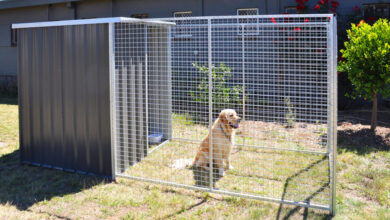Bathing Your Dog With Allergies? Here’s How Often You Should Do It!

1. Introduction
Every pet owner wants their pup to look and feel their best. But when your dog has allergies, it can be difficult to know how often you should bathe them. Bathing your dog with allergies is an important part of managing their condition, but it’s also important to know when and how to do it properly. In this article, we will discuss the benefits of bathing your dog with allergies, common types of allergies in dogs, how often you should bathe a dog with allergies, best practices for bathing a dog with allergies, what products to use when bathing a dog with allergies, tips for making the bath time easier, and sources for further information.
2. The Benefits of Bathing Your Dog With Allergies
Bathing your pup regularly is an important part of maintaining their health and hygiene. For dogs with allergies, regular baths can help reduce symptoms by removing allergens from the fur and skin. This can help reduce itching and inflammation associated with some types of allergic reactions. Additionally, regular baths can help prevent secondary skin infections that are caused by excessive scratching or biting due to allergy-related discomfort.
3. Common Allergies in Dogs
There are many different types of allergens that can cause allergic reactions in dogs including food allergens, environmental allergens such as pollen or dust mites, contact allergens such as fabrics or chemicals used in grooming products, and flea saliva allergens. It’s important to identify the source of your pup’s allergy before beginning any treatment plan so that you can avoid exposing them to these triggers in the future.
4. How Often Should You Bathe a Dog With Allergies?
The frequency of baths depends on the type of allergy your pup has as well as their individual needs. Generally speaking, if your pup has environmental or contact allergies then they should be bathed at least once every two weeks using hypoallergenic shampoo specifically designed for pets with sensitive skin. If they have food allergies then they should be bathed more frequently – at least once per week – using a hypoallergenic shampoo designed for pets with food sensitivities or intolerances such as those containing oatmeal or aloe vera extract which can help soothe irritated skin caused by allergic reactions..
5. Best Practices for Bathing a Dog With Allergies
When bathing a pup with allergies there are several best practices that should be followed including:
• Always use lukewarm water – never hot – when giving your pup a bath as this will help prevent further irritation from occurring due to extreme temperatures;
• Use only hypoallergenic shampoos specifically designed for pets with sensitive skin;
• Rinse thoroughly after shampooing to remove all traces of soap residue;
• Gently pat dry rather than rubbing vigorously which could cause further irritation;
• Apply moisturizing lotion or cream after each bath to keep skin hydrated;
• Avoid scented products which may contain irritants;
• Consider adding an omega-3 fatty acid supplement into their diet which may help reduce inflammation associated with allergic reactions;
• Talk to your vet about other medications that may help manage symptoms associated with your pup’s particular allergy such as antihistamines or topical steroids if appropriate..
6. What Products To Use When Bathing A Dog With Allergies
When looking for hypoallergenic shampoos specifically designed for pets with sensitive skin make sure you read labels carefully and select products made without harsh additives such as dyes or fragrances which could cause additional irritation or worsen existing symptoms associated with allergic reactions.. Additionally look out for natural ingredients such as oatmeal extract which helps soothe inflamed skin while still providing effective cleaning power.. When selecting moisturizers make sure they are free from artificial fragrances and contain natural ingredients like aloe vera extract which helps hydrate dry skin while also having anti-inflammatory properties.. Lastly always consult your vet before introducing any new products into your pet’s routine..
7. Tips For Making The Bath Time Easier
Bath time doesn’t have to be stressful! There are several tips you can follow that will make the process easier on both you and your pup:
• Start early – get them used to being handled in preparation for bath time from an early age;
• Make sure the water temperature is comfortable – not too hot nor too cold;
• Use treats during the bath time process – this will encourage them while also helping them associate bath time positively;
• Make sure they have plenty of room – use a non-slip mat if necessary;
• Talk calmly throughout – this will help keep them relaxed while also helping distract them from any discomfort they may feel during the process;;
• Use waterproof gloves if available – this will protect both you and your pup from potential irritants present within the shampoo solution.;
• Have everything ready before getting started – this includes towels, shampoo solution etc.;
• Give lots of praise afterwards!
8 Conclusion
Bathing is an important part of managing allergic reactions in dogs but it’s essential that owners understand how often they should bathe their pups depending on their particular type of allergy as well as what products should be used during the process in order to minimize potential irritation caused by harsh additives present within some shampoos and moisturizers.. Following these guidelines along with incorporating other strategies such as starting early when introducing pups to bath time routines and using treats during the process will help ensure that both owners and pups have a positive experience during bath times!
9 Sources
. PetMD (2020). “Bathing Your Dog: A Guide For Beginners.” Accessed July 2nd 2020 https://www.petmd.com/dog/grooming/evr_dg_bathing_your_dog_a_guide_for_beginners?page=show.WebMD (2020). “Bathing Your Dog: A Step By Step Guide”. Accessed July 2nd 2020 https://pets.webmd


